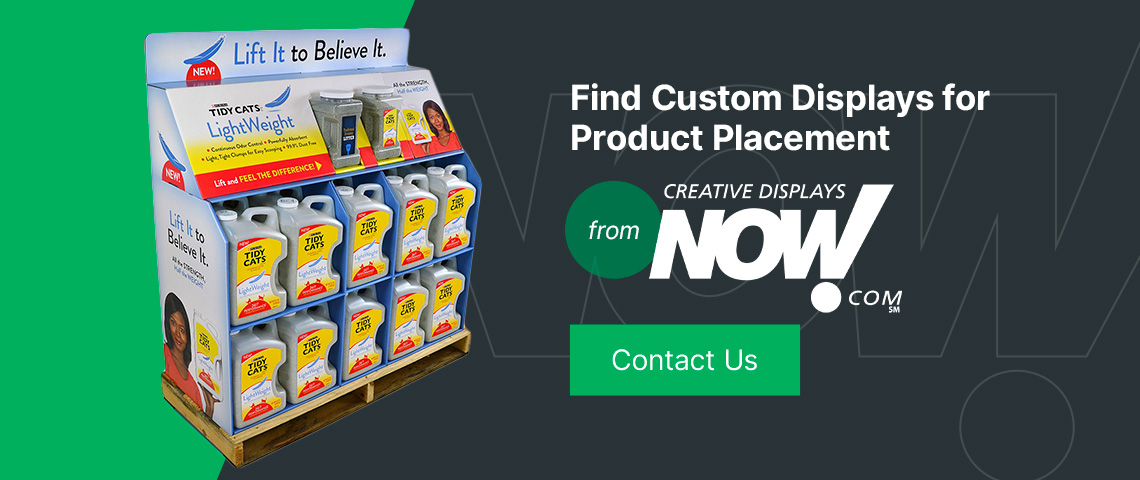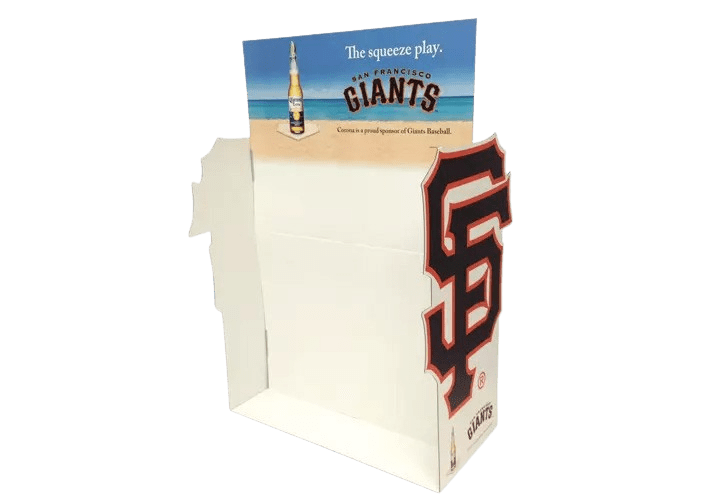
Product placement is an effective marketing technique that involves placing products in prime areas on shelves and floors. These strategies naturally attract customers and help you increase product sales — the right location can have an incredible impact on how often patrons see and interact with your product.
Understanding retail product placement marketing and why it’s crucial for your product can be the difference you need to stand out in competitive retail spaces.
What Is Product Placement in Retail, and How Does It Work?
Retail product placement is a form of in-store marketing. It works by using customer behavior to find the best positions for items so that they sell well. Like any good marketing strategy, retail product placement relies on customers’ shopping habits and human psychology to grab shoppers’ attention and promote the product and brand.
Retailers implement various product placement strategies to boost product sales, including:
- Placing products at eye level.
- Positioning products strategically at the front or back of the store, depending on product price and necessity.
- Creating a visual hierarchy by placing goods in a logical sequence that will direct a shopper’s attention.
- Harnessing the flow of natural foot traffic and shopper habits to position products.
Why Is Product Placement Important in Retail?
The benefits of retail product placement show why it’s such an important marketing strategy.
Creating Visual Attention
Product placement marketing considers how easily consumers can notice a product and want to purchase it over competing products. A common saying in retail is that “eye level is buy level.” This saying encapsulates how shoppers are likely to purchase items at, or slightly below, eye level.
This simple yet highly effective placement strategy works, as products are in a shopper’s primary field of vision and are generally easily accessible.
Encouraging Impulse Purchasing
One of the greatest benefits of having products at eye level or in other strategic retail spaces is that it encourages impulse buying. These items are more readily visible and accessible, which already influences purchases. Strategic product placement can help you take your marketing efforts a step further.
Placing products in high-traffic areas increases the likelihood of customers noticing your product. These high-traffic areas include shelves and displays near entrances, shelves at the front of an aisle, shelves at checkout, and displays on checkout counters. These are busy, noticeable areas. Increased exposure to products while customers pass aisles and wait in line boosts product and brand awareness, increasing the likelihood of a purchase.
Making Shopping a More Convenient Experience
Strategic product placement also relies on shopping habits to work effectively. These shopping habits are some of the primary reasons why prime retail space exists in the first place.
Shoppers are more likely to be satisfied with their shopping experience if products are easy to find. Most shoppers won’t go out of their way to find a nonessential item, so it’s crucial to make these products as visible and accessible as possible. With the right placement, you can ensure your product stands out and customers can easily navigate to what they need.
3 Retail Product Placement Marketing Strategies That Work
Negotiating product placement marketing strategies with store owners or managers can help you get your products in store areas where they’ll perform best. Consider the three ideas below:
1. Place Small, Convenient Items at Checkout
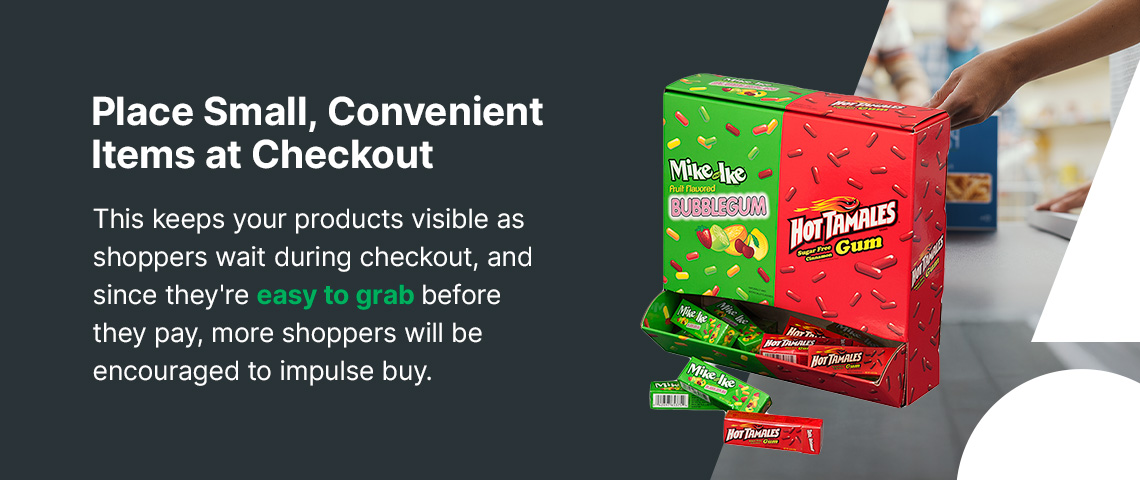
If you produce smaller convenience items, such as gum, candy, tissues or lip balm, you’ll likely want to have your items placed at the checkout counters. This placement keeps your products visible as shoppers wait during checkout, and since they’re easy to grab before they pay, more shoppers will be encouraged to impulse buy. If someone intended to buy your product in a different part of the store but forgot, they’ll be reminded while checking out their other items.
An eye-catching checkout display can make a huge difference in attracting customers. The placement at checkout is already an effective start, and you can make even more of an impact by using a checkout display that fits your products and brand perfectly. Keep accessibility and design in mind as you choose between options.
2. Placing Complementary Products Together
If you manufacture a line of products that complement each other, try cross-merchandising. Placing complementary items together is an excellent way to boost sales. For example, retailers will pair pastas and sauces or cheeses and wines in a vibrant display. These items are commonly bought together, and shoppers will appreciate being able to access both in one place.
This type of logical merchandising can work for just about any product, whether that’s food and drink items, grocery essentials, supplements, home goods, pet supplies, electronics, or clothing. A similar strategy you may talk to store owners about is pairing some of your top-selling items with complementary items that don’t sell as often. This technique can help boost your overall sales.
3. Using Eye-Catching Product Displays
Gaining prime retail space for your products can be competitive and costly. You want to make the most of having your products in these spaces around stores, and quality product displays can help you do that. With the right product display, you can have a functional design that also tells your brand’s story and promotes your product’s best features.
To do this, you need a custom display — a basic, generic option won’t win customers over, especially when competing for that space. While creating your custom display design, consider modular options that suit your product, and get creative with how you want the display to reflect your brand.
The Importance of Retail Displays for Product Placement
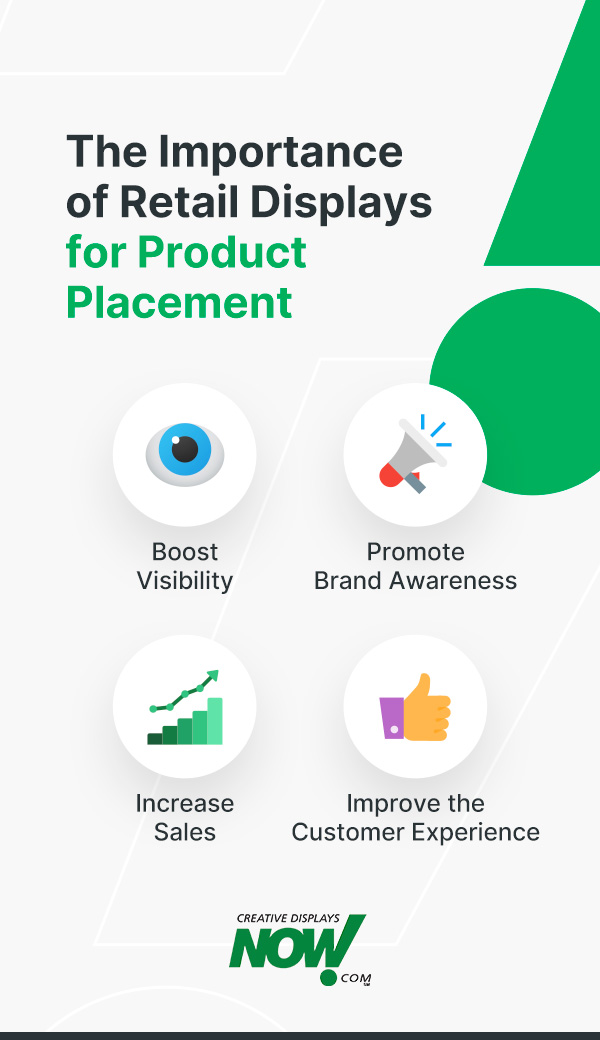
Product placement is all about maximizing product visibility in ways that generate sales, and the perfect solution for achieving visibility is using retail product displays. A well-designed display can be a powerful marketing tool that promotes your product and brand and boosts sales.
Retail displays are an important part of retail product placement for several reasons:
Boost Visibility
Many consumers have product preferences, meaning they repurchase the same items without giving thought to new brands. This style of shopping can make it difficult to attract new customers.
However, you already have a competitive edge if you can grab a customer’s attention in a sea of products. Doing what you can to make your product stand out as interesting, unique and valuable is key to retail store positioning. You may have the best shelf space or floor space, but that can only be as effective as your ability to use that prime space well.
A creative display maximizes your prime retail space, as you’re not relying solely on store layout to influence a customer’s buying decision. The display draws their attention and promotes your brand more effectively than a good shelf or floor position can on its own.
Promote Brand Awareness
You can use a custom retail display to share your product’s story and promote your brand right in the middle of a shopping experience. If a shopper has never heard of your brand, they may find no reason to purchase your product. Giving them immediate access to a quick highlight of your brand and mission can help them feel more confident in trying something new. Consider sharing a snippet of what you do, and make your product’s benefits clear.
Increase Sales
Custom displays provide highly effective in-store advertising to help drive your product sales. While proper product placement is a powerful way to improve sales, so is the way you display your products.
In one study, 69% of shoppers said they’d seen in-store product advertisements, and of those respondents, 61% purchased products from in-store advertisements. In another study on the sales effects of in-store product displays, the findings showed significant increases in sales for products placed in displays.
As you determine the best locations for your array of products, think about how the right display can make a difference in increasing sales.
Improve the Customer Experience
A sometimes overlooked aspect of product placement is the customer experience. As customers shop, they’re looking for a seamless experience — they want to easily find what they need without spending too much time at the store or asking for help. When they’re looking for new products to try, they want that experience to be just as simple.
A descriptive, attention-grabbing retail display can help. Patrons will quickly identify your product and its purpose, and they can decide to put it in their cart before heading to their next stop in the store. Keeping things easy to access and read also makes a positive impact.
The Best Types of Displays for Product Placement Marketing in Retail
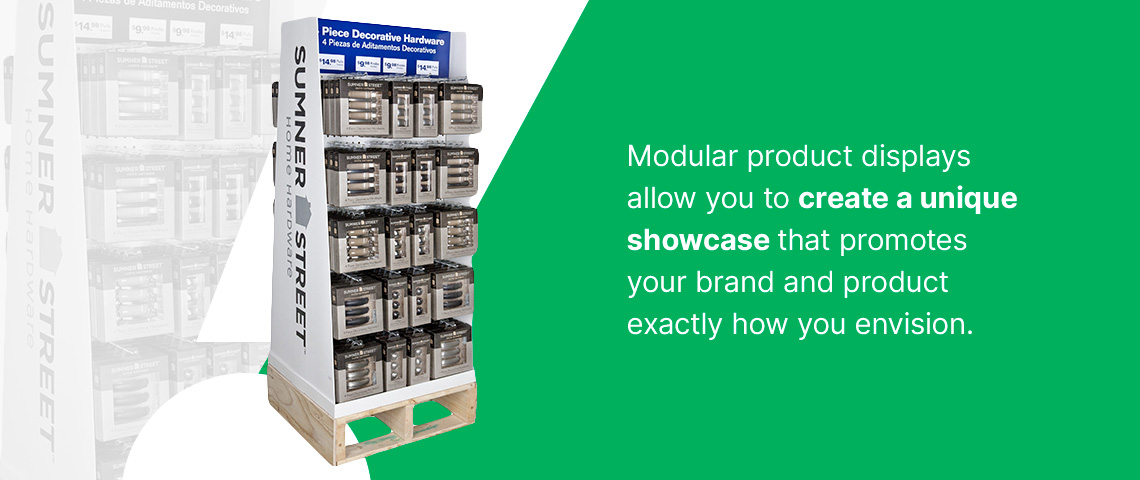
Modular product displays allow you to create a unique showcase that promotes your brand and product exactly how you envision. You can choose from several types of customizable displays that work well in conjunction with retail product placement:
- Point-of-sale (POS) displays: POS displays are an excellent way to encourage impulse buying. Different POS displays suit various products, including space-saving counter displays at checkout.
- End cap displays: End cap displays are positioned at the end of aisles, acting as an attractive feature in high-traffic areas. End cap displays are typically larger and can hold a versatile range of products.
- Skinny tower displays: Skinny towers are tall, thin displays with hooks or shelves for displaying smaller products. They’re visually appealing and instantly noticeable. Skinny towers are great for showcasing lightweight products and capitalizing on small spaces.
Frequently Asked Questions
The answers to these two FAQs can help you put your product’s retail placement marketing strategy in place:
How Much Does It Cost Companies to Use Product Placement in Stores?
The costs of negotiating prime retail space depend on numerous factors. When referring to the negotiations between you as the manufacturer and store owners and managers, several considerations come into play.
The main cost of product placement in retail is called the slotting fee or listing fee. This is a one-time fee that secures the shelf or floor space for your product. This cost can vary based on what type of product you manufacture and the amount of stock you’d like to have in a specific store.
As a manufacturer, you also need to consider additional costs for product placement marketing in retail, including potential upfront fees for inclusion in promotional activities such as print ads and display placements.
How Can Manufacturers Negotiate for Better Product Placement With Retailers?
Negotiating with retailers is about creating rapport and trust. This means building a good relationship with open communication and delivering on your end of the bargain to gain a store manager’s confidence in your product.
The first step to negotiating better product placement is knowing your value proposition. What makes your product valuable and unique from competitors? How can you show that your product can satisfy a gap in the market and sell better than other products? Store owners want to know they’re providing prime space for products that will also increase their sales and profits.
Presenting store owners with a proposition that’s creative, dynamic and flexible is the next step. One way to negotiate prime space is by showing store owners your captivating product display.
Find Custom Displays for Product Placement From Creative Displays Now
Retail product placement marketing is a captivating, cost-effective and smart way to set yourself apart from competitors and drive sales. By incorporating custom displays into your retail product placement strategy, you can also create brand awareness and negotiate prime retail spaces with store owners.
Are you ready to take your in-store product marketing strategy to the next level? At Creative Displays Now, we have an in-house team of experts who help you design and manufacture custom corrugated cardboard displays for various retail products, including end cap and point-of-sale displays.
We’re leaders in the retail display industry, providing our customers with quality custom packaging solutions to boost brand awareness. Explore our fully customizable display solutions or contact us today to request prototypes or estimates.

 1-866-244-2214
1-866-244-2214